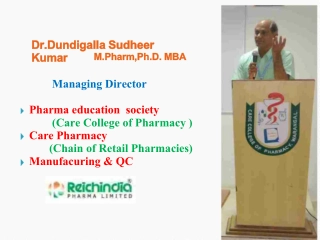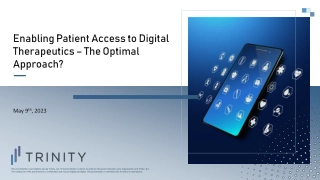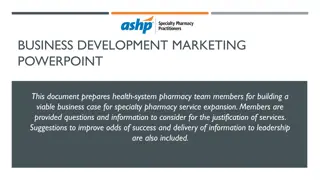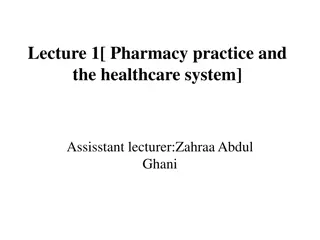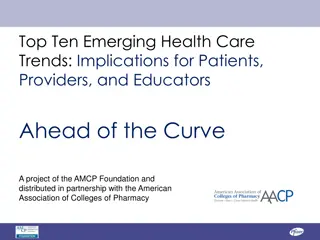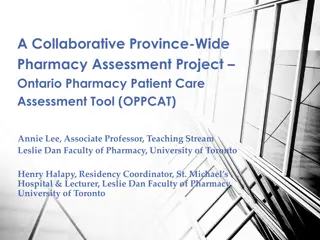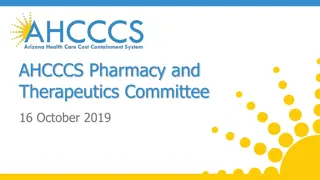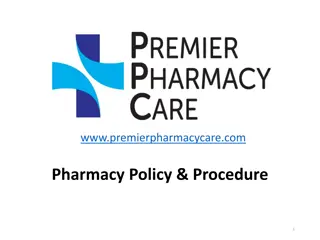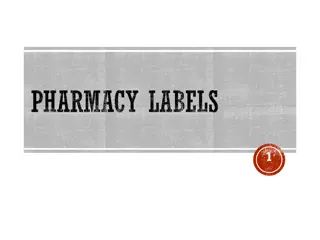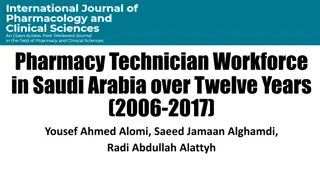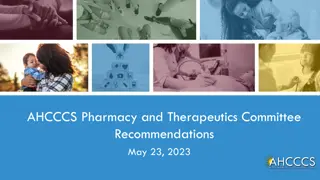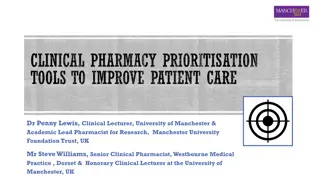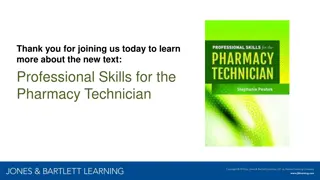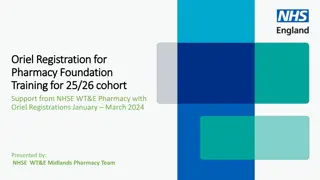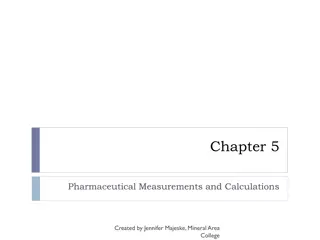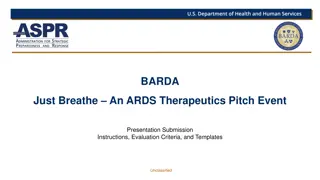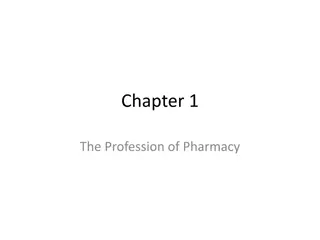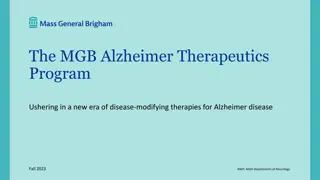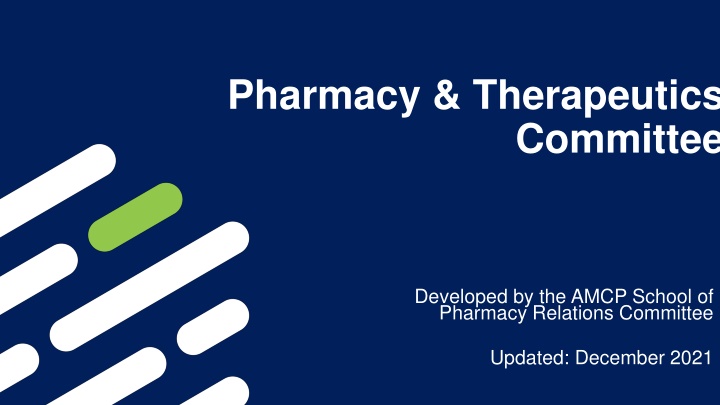
Pharmacy & Therapeutics Committees: Roles, Membership, and Actions
Explore the roles and responsibilities of Pharmacy & Therapeutics (P&T) Committees, including their purpose in promoting safe and cost-effective drug therapy, educating practitioners, and developing policies. Learn about the membership composition, actions taken, and factors considered by these committees, with insights into who utilizes them and the importance of regular meetings.
Download Presentation

Please find below an Image/Link to download the presentation.
The content on the website is provided AS IS for your information and personal use only. It may not be sold, licensed, or shared on other websites without obtaining consent from the author. If you encounter any issues during the download, it is possible that the publisher has removed the file from their server.
You are allowed to download the files provided on this website for personal or commercial use, subject to the condition that they are used lawfully. All files are the property of their respective owners.
The content on the website is provided AS IS for your information and personal use only. It may not be sold, licensed, or shared on other websites without obtaining consent from the author.
E N D
Presentation Transcript
Pharmacy & Therapeutics Committee Developed by the AMCP School of Pharmacy Relations Committee Updated: December 2021
Objectives Identify the purpose and structure of a Pharmacy & Therapeutics (P&T) Committee Understand the roles and responsibilities of a P&T Committee
P&T Committee Purpose Promote safe, effective, and cost-effective drug therapy Develop policies regarding drug evaluation, selection, and utilization Educate practitioners on drugs and appropriate drug utilization
Who Uses P&T? Any organization that maintains a drug formulary utilizes a P&T Committee Hospitals Health Plans Prescription Benefit Managers (PBMs) VA and Military
P&T Committee Membership Primarily physicians and pharmacists Includes practitioners from a variety of specialties May also include members from other divisions of healthcare Nursing, Nutritional Services, Administration, Law, Quality Assurance May also include lay member(s) Represents plan members Not a healthcare provider
P&T Committee Actions Regular meetings no less than once per quarter CMS regulates P&T Committees for Part D plans must meet at least quarterly Review of scientific evidence and standards of practice, peer reviewed medical literature, clinical practice guidelines, and pharmacoeconomic studies Manage the development and maintenance of the organization s drug formulary
P&T Committee Actions Manage educational programs regarding drug utilization Develop policies to ensure safe and effective drug use Develop policies to promote cost-effective drug therapy Advise on drug distribution and control procedures
Factors Considered by P&T Committee Clinical efficacy Safety Therapeutic need Clinical guidelines Standards of medical practice Other treatment options Pharmacoeconomics Cost
Clinical Evidence & Cost-Effectiveness Organizations choose whether to include cost data as part of the P&T Committee Review process If cost data is not included, drugs are reviewed solely on clinical efficacy and safety An administrative committee is then tasked with final formulary placement decisions based on: P&T Committee s clinical evaluation Cost-effectiveness data
References Navarro, R. 2009. Managed Care Pharmacy Practice. 2nd edition. Sudbury, MA: Jones and Bartlett Publishers. ASHP statement on the pharmacy and therapeutics committee and the formulary system. Am J Health-Syst Pharm. 2008; 65:2384 6. CMS Medicare Prescription Drug Benefit Manual. CMS Website. http://www.cms.gov/Medicare/Prescription-Drug- Coverage/PrescriptionDrugCovContra/Downloads/Chapter6.pdf. Accessed 31 Dec 2013.
Mission & Vision To improve patient health by ensuring access to high-quality, cost-effective medications and other therapies.
Thank you to AMCP members Thomas Walters and Beth McCarty for updating this presentation

